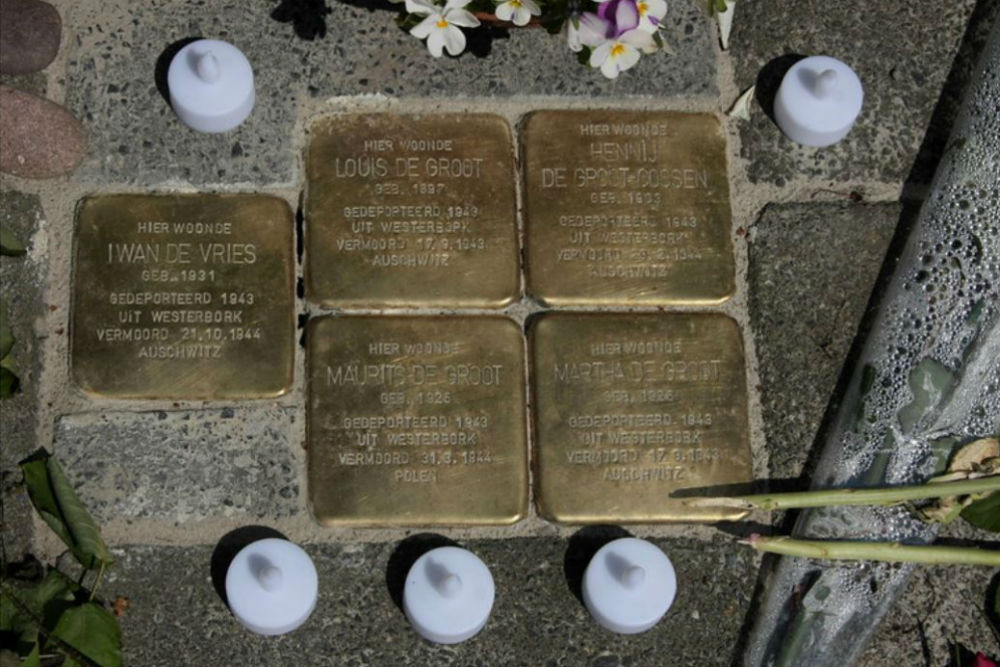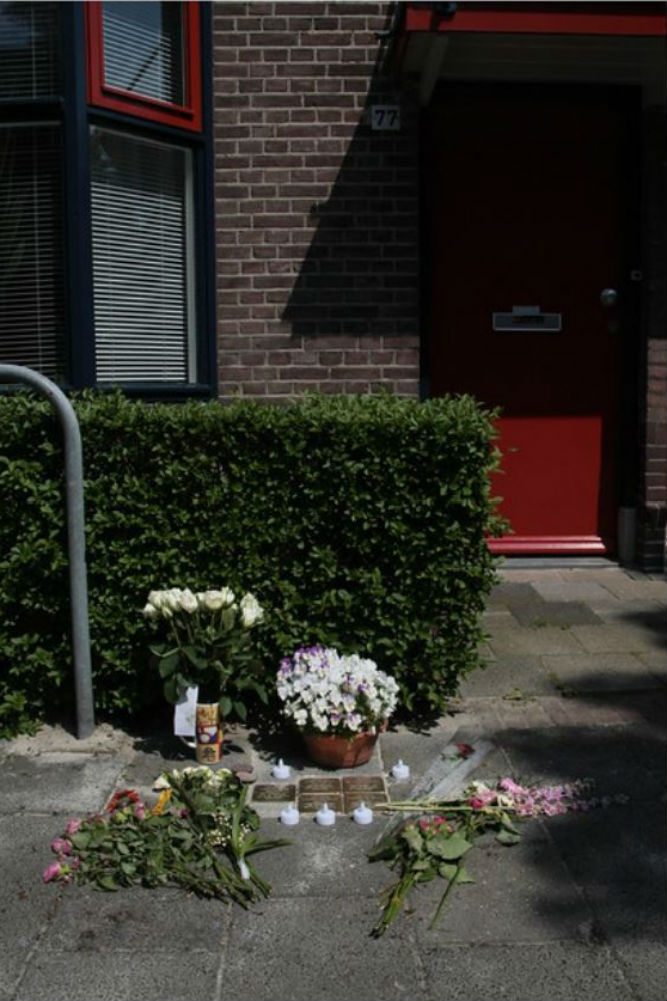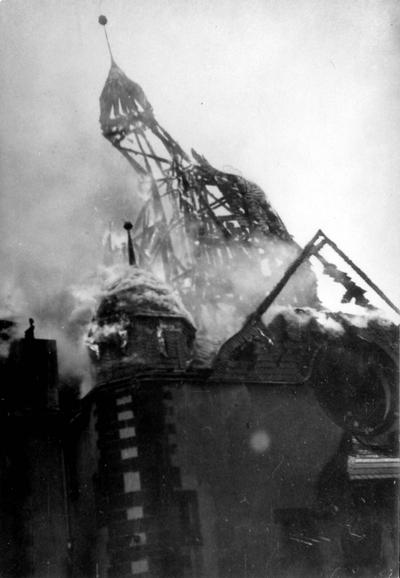Stumbling Stones Petrus Hendrikszstraat 77
These brass plaques (Stolpersteine or stumbling stones) commemorate:
* IWAN DE VRIES, (born 1931, deported 1943 from Westerbork, murdered 21 October 1944, Auschwitz)
* LOUIS DE GROOT, (born 1897, deported 1943 from Westerbork, murdered 17 September 1943, Auschwitz)
* HENNIJ DE GROOT-COSSEN, (born 1903, deported 1943 from Westerbork, murdered 29 February 1944, Auschwitz)
* MAURITS DE GROOT, (born 1925, deported 1943 from Westerbork, murdered 31 March 1944, Poland)
* MARTHA DE GROOT, (born 1926, deported 1943 from Westerbork, murdered 17 September 1943, Auschwitz)
These Stolpersteine lie here for Jewish war victims, persecuted, deported and/or murdered in World War II.
Louis de Groot, a warehouse clerk, and Hennij Cossen married in 1924. They had two children – Maurits (born 1925) and Martha (born the next year). At the end of 1939, they took in as a foster child the 8-year-old orphan, Iwan de Vries, who was 6 years younger than Martha.
Information on the exact deportation dates for the members of this family was not found even though dates of death were documented. Louis de Groot and his daughter Martha were murdered in Auschwitz on the same September day in 1943; Hennij and Maurits de Groot and Iwan de Vries survived somewhere until their murders in February, March, and October the next year.
Hennij de Groot-Coussen had travelled to Germany after the November 1938 Pogromnacht to check on her father and sister. On 15 November 1938, she wrote to the Jewish Central Information Office about what she saw. The English version is in The Weiner Library. Her father and sister were okay then, but both were murdered in the 1940s -- he in Westerbork, and she in Auschwitz.
"Stolpersteine” is an art project for Europe by Gunter Demnig to commemorate victims of National Socialism (Nazism). Stolpersteine (stumbling stones) are small, 10x10cm brass plaques placed in the sidewalk in front of the last voluntary residence of (usually Jewish) victims of the Nazis. Each plaque is provided with the victim’s, date of birth, and fate. By doing this, Gunter Demnig gives an individual memorial to each victim. One stone, one name, one person. He cites the Talmud: “A human being is forgotten only when his or her name is forgotten.”
Do you have more information about this location? Inform us!
Source
- Text: Anne Palmer
- Photos: Suzanne Matrosov-Vruggink (1), Suzanne Matrosov-Vruggink (2)
- Petrus Hendrikszstraat 77 | Joodsmonument.nl
- Pogrom November 1938: Testimonies
Nearby
Point of interest
- Bullet Holes Boteringesingel 4 - Groningen
- NSVO District Office Groningen - Groningen
- Bullet Impacts Warehouse Hunsingo - Groningen
Monument
- Memorial Kapelaan Böcker - Groningen
- Memorial Clothing Factory Levie - Groningen
- Memorial Groningen District Court - Groningen
Cemetery
- Dutch War Graves Northern Cemetery - Groningen
- Dutch War Graves Jewish Cemetery Groningen - Groningen
- Second Emergency Cemetery Selwerderhof - Groningen
Remembrance Stone
- Stumbling Stones Petrus Hendrikszstraat 28 - Groningen
- Stumbling Stone Boterdiep 22a - Groningen
- Stumbling Stone Hermanstraat 47 - Groningen
Fortification
- German Shelter Suikerunie Factory - Groningen
- German Tobruk Bunker Suikerunie Factory - Groningen
- German Bunker Haren - Haren







